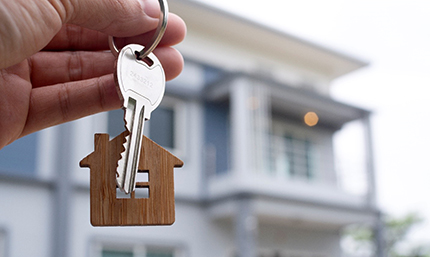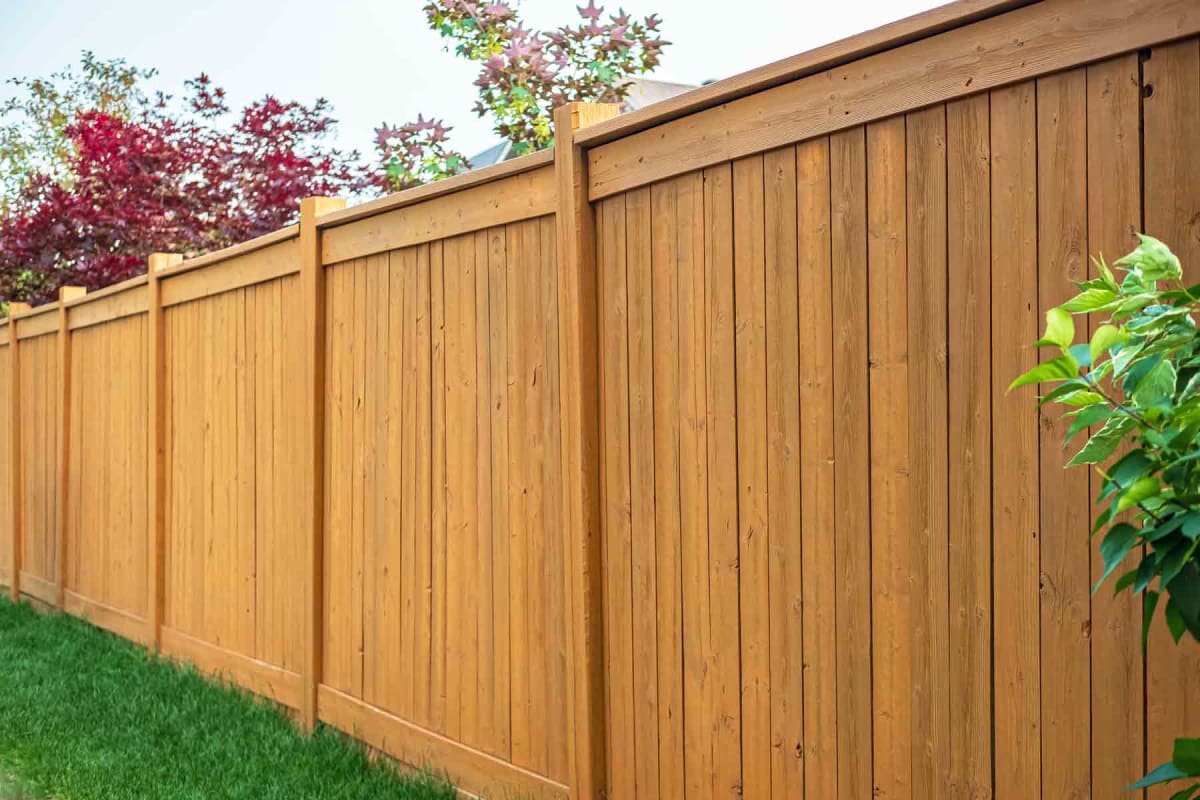[ad_1]
Nido House in Melbourne by Angelucci Architects

The use of colour is an integral to making this small house feel like a family home for six. Green hues bring nature into the home, blues accentuate the sky visible from the lofty ceilings and whites neutralise the backdrop of the house to calm its occupants.
Dulux Whisper White acts as the base colour throughout, warming the home as a backdrop for the natural crafted building materials used in the design. Timber, polished concrete, hand painted green tiles, red brick, slate, and blue stone are reflected in the Dulux Whisper White colour base creating subtle movement with the changing of light and materials through out the house. Dulux Still in the downstairs main bedroom with its warm green hues creates a calming effect for for the owners after a busy day of work and play with their four children under six years of age. Dulux Still draws the hues of nature into the bedroom and continues through to the ensuite with the green hand crafted Japanese tiles.
Credits
Grid House in Melbourne by Doherty Design Studio









Wanting to establish an overarching feeling of serenity and calmness in the interiors, colour choices were for Grid House are deliberate and bold, but not loud. The introduction of blue tones provides adornment and interest, and the repetition of this colour also facilitates a connecting thread between all of the spaces. Colour is also used as a means of delineating one space from another – the new staircase marked the point at which the original section of the house met the new. Blue timber panelling and rich blue silk carpet to the stairs (along with a band of terrazzo flooring) has been used to highlight and define the old from new. Establishing a sense of consistency and repetition through colour also allows other decorative elements – such as the custom powdercoated steel balustrade, steel detailing in the study and joinery handles – to successfully co-exist within these spaces.
For the Interior, Dulux Natural White was used for walls and ceilings, internal doors, architraves, kitchen overhead shelf, island bench cabinetry, living room drawers, study sliding door, study shelving. The study sliding door, living room shelves, study cupboards and panelling to hallway and stairs are painted in Dulux Copy Cat. Dulux Wistow has been used for the study walls and fireplace, hallway joinery and feature sliding door. The hallway joinery and panelling to kitchen is painted in Dulux Silkwort, and the kitchen back bench frame, bathroom mirror, master ensuite overhead cupboard frame, first floor bathroom overhead cupboard frame and staircase ballustrade are all painted in Dulux Dark Bronze. The kitchen handles are painted in Dulux Shale Grey.
Credits
“We were excited to see such an exciting and imaginative use of colour in this year’s entries,” says Dulux Colour Specialist, Davina Harper. “Architects and designers have really pushed the boundaries with colour application to create inspiring, engaging – and often surprising – interior and exterior spaces.
“Deeper tones of blue and green were popular amongst residential interiors, showcasing diverse moods in areas and differentiating functional use in a space – from deep and dark, to bright and lively – applied to cabinetry, trims and walls to create a peaceful, relaxing interior setting. Impactful tones and washed walls are also making a presence, bringing a sense of moody sophistication to interiors,” added Davina.
Private Residence, Remuera by Space Studio
An existing family home renovation in the leafy suburb of Remuera, the studio created a series of colourful and cohesive spaces to reflect the vibrant personality of the family that call it home. The palette of the Media room finishes is created around a gravelly green carpet selected to use throughout the home. Wanting the space to be bold, much like the family that reside there, Space Studio chose Dulux Okete and Dulux Kea Point – two bold, clean green tones – to create a colour-blocking effect that successfully brought the room together.
Credits
Autumn House, Melbourne, by Studio Bright









An extension to a Victorian terrace with a 1980’s renovation by architect Mick Jörgensen and a mature Elm tree in the backyard, this project balances the architecture of the Victorian, and the Jörgenson addition, with a new contribution by Studio Bright. The original period rooms offer traditional spaces and detailing which lend itself to a neutral palette of Dulux Natural White and creamy Dulux Light Rice. The 80’s Jörgensen elements adopt a playful palette of Dulux Cucumber Crush and Dulux Celery Satin to complement the rich exposed timber, red brick floor and lush garden glimpsed through windows. An immersive experience is found through the bathroom door where a visitor can dive into the calming aquamarine sanctuary. A large custom bath and matching mint basins for twin girls are complemented by playful Stromboli-coloured elements to complete a cohesive palette.
The new north-facing extension celebrates the Elm tree at its heart, surrounding and embracing the canopy and bringing the seasonal beauty and colouring of the tree into daily life. The new perimeter wall provides a Dulux Oyster Linen backdrop for the warm pink hues within and the landscape beyond. Splashes of Dulux Earth Warming and custom pink concrete pieces reference the ever-changing autumnal colours of the tree, and provide a colourful and delightful environment for daily life.
Deep inside the Russet Tan coloured volume above, the main bedroom retreat is surrounded by a slim garden with the subtle green colouring of Dulux Oyster Linen creating a comfortable cocoon inside. In the adjacent ensuite, calming hues of Dulux Deep Ocean and Dulux Shallow Sea offers a private oasis with city views.
Credits
Erskineville House in NSW by Lachlan Seegers Architect









At the centre of this narrow site stands a single Spotted Gum that has towered over the existing terrace since the early 1970’s. Considered a tremendous gift, a suite of precise interventions respond directly to this magnificent tree, binding the atmosphere of the home with the ever-changing presence of nature. The tree provided the foundation and was omnipresent throughout the design process. The most significant of these interventions is associated with the introduction of colour to harness the spirit of the tree and moderate the atmosphere of the interiors to respond to the ever-changing colours of nature.
Joinery elements were coloured in the green hue Dulux Battledress to respond to the leaves, while the inner surfaces of the kitchen apertures were painted in a light yellow, Dulux Daffodil, to ensure the view into the canopy always felt sunny. The steel threshold onto the courtyard was painted natural grey to compliment the hues of the trunk and bathrooms were tiled and painted blue to create the atmosphere of being underwater. Additional colours used include Dulux Night Wizard, Dulux Natural White, Dulux Silver Tea Set and Dulux Madigan.
Credits
Sorrento House in Melbourne by Fiona Lynch Interior Design








The house was structurally sound, but was butchered five years ago under a warehouse style, so the clients requested the relaxed feel of a holiday home with an air of contemplative seclusion. Stripped of all its bulky joinery (bar the kitchen’s laminate which was revived via oak veneer cladding with a 2pac finish, and extended), selected walls throughout were rhythmically covered in sage polished plaster and raffia wallpaper. Combining the green with the pebble hues of European Oak floorboards, open weave linen curtains, plus Tundra Grey limestone and pitted travertine stone selections, the spaces tonally absorb the surrounding shoreline’s sand and thick scrub.
Nodding to the Italian-Australian client’s strong ancestral ties given the chalky coastal Positano palette, the bathrooms simulate grottoes flooded in high tide with their all-green hard and soft finishes. Armchairs and sofas usher ultra-cushioned comfort on both levels to enforce a theme of luxe seclusion, whilst broad loom, loop pile wool carpets in speckled cream shades ensure the lightest of touch-downs when entering the bedrooms. Feature rugs in the study and lounge areas on both levels introduce the gradient shades of Sorrento’s coast – from the shallows to the rich indigo hues beyond the bay. Key paint colours used are Dulux Cargo River Quarter and Dulux Olive Paste in 30% Clear Satin.
Credits
The winners’ announcement of the Dulux Colour Awards will take place at a gala event in Melbourne and will be live streamed to a celebration with the New Zealand finalists in Auckland. Details of the Gala Event will be announced in the coming months.
AD / This is a Paid Partnership post. I only work with products I love and all opinions are my own. For more information please visit my About Page.
[ad_2]
Source link





More Stories
Christmas Baubles Wholesale as a Business
Plan for the Most Lively and Functional Living Room Ambiance
Eclectic Bohemian Design and Furniture